Whether a beginner artist or a veteran, the best way to improve your digital drawing skills is by doing good digital drawing exercises!
From drawing with a limited color palette to creating mixed media and sculptures, there’s a suitable drawing exercise for you in this list.
Here you can find a healthy mix of beginner, intermediate, and advanced digital drawing exercises to match every skill level.
These digital drawing exercises are ordered from easiest to hardest, so if you want more of a challenge, keep scrolling!
Table Of Contents
- 1 Draw Using A Limited Color Palette
- 2 Practice Drawing Basic Shapes Of A Simple Subject
- 3 Fill A Sheet With Simple Lines
- 4 Draw From (Easy) Reference Material
- 5 Experiment Drawing With New Tools Or Brushes
- 6 Draw An Old Art Piece Again
- 7 Practice Drawing In A Different Art Style
- 8 Practice With Different Brush Thickness And Settings
- 9 Draw The Same Scene In Different Perspectives
- 10 Practice Drawing A Difficult Animal
- 11 Draw Something Out Of Blobs
- 12 Try Digital Sculpture And 3D Modeling
- 13 Master Drawing A Specific Body Part
- 14 Do A Drawing Exercise With A Time Constraint
- 15 Expand Your Color Palette
- 16 Draw Dynamic Poses For A Character
- 17 Digitally Paint A Complex Environment Or Landscape
- 18 Related Questions
Draw Using A Limited Color Palette

One of the best way to boost your artistic skills AND improve at color theory is by using a limited color palette.
With this digital drawing exercise you can not only work on composition and value, but also creating better artwork by blending and mixing colors correctly.
So here are the steps for this digital painting exercise:
- Choose a subject to draw. Try choosing something simple at first, such as a mug or a ball. You can check this list for other simple drawing ideas.
- Select 3-5 colors that work together. Don’t go overboard with colors! 3 to 5 colors are more than enough. I recommend you to use a website such as coolors.co to help you find a good palette.
- Use ONLY these colors in your drawing. Use the colors you’ve picked. Don’t try to add more colors or switch them up, use your palette. A tip: don’t try to use the colors equally. Make 1 or 2 predominant colors and then use the others for small details.
And you’re done! This is a especially useful digital drawing exercise if you want to improve at using colors in your artwork.
Practice Drawing Basic Shapes Of A Simple Subject
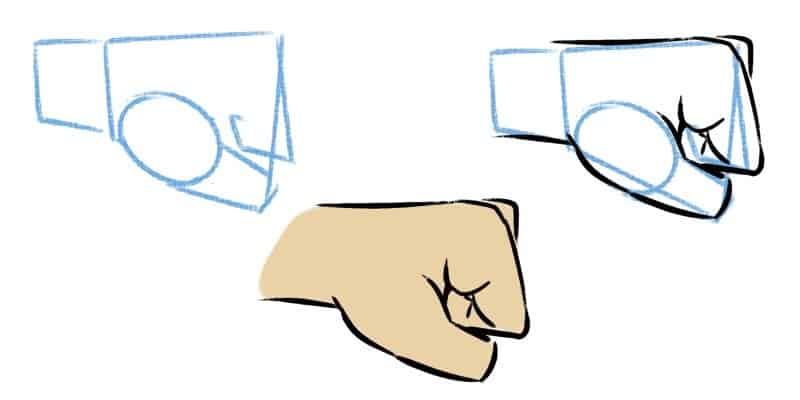
Drawing basic shapes is a fundamental aspect of being a good artist.
In fact, this is a great drawing exercise if you plan on doing some figure drawing. The entire human body can be split into basic shapes and then refined and detailed later.
Many digital artists warm up by drawing shapes first, and then move on to other exercises, before starting to work on their main projects.
To do this exercise:
- Get a reference of a simple subject.
- Draw simple shapes. Circles, Rectangles, Squares, Triangles, draw shapes that are in their essence very simple. Either on top of the reference photo or to the side, it doesn’t matter!
- Pay attention to the relation between each shape. Your entire digital drawing of the subject should be easily identifiable with these shapes.
- (Optional) Refine the shapes and add details. The base exercise is meant to draw only the basic shapes, but you can go a step further and add details and refine it if you want an extra challenge!
This is one of many great digital painting exercises where you can keep ramping up the difficulty with more complex subjects. Have fun!
Fill A Sheet With Simple Lines

One of the best ways to improve your line quality and control of your digital drawing tools is by drawing lines on a canvas, sheet, or file.
This simple exercise can feel almost dull, but it’s actually pretty satisfying to see all those lines drawn together!
For this exercise:
- Choose your drawing tool. You can use the same brush you use normally, or try other digital brushes.
- Fill a layer with lines. You can draw straight lines, parallel lines, or some curved lines. Totally up to you! This is a great time to draw some patterns and just doodle around. What matters is that you keep your lines confident and flowing.
Do keep an eye out on the pressure that you’re applying to your tool, and vary it to see the effects on your software! Just have fun and play around with it.
Draw From (Easy) Reference Material

If your weakness in drawing (either digital or traditional drawing) is accuracy to the details of what you’re drawing, you most likely are lacking good reference!
Either that, or you’re not using any reference at all! (don’t do this please)
To make this an easy digital drawing exercise, I recommend you grab a reference photo of still life. Then you just focus on the proportions between each element of the photo!
You can even draw directly on the original photo so you can improve your muscle memory of the subject. Notice the light source, how the shading looks, and pay a lot of attention to the details!
Tip: If you’re taking the photo, take it from different angles so you can practice different perspectives.
Experiment Drawing With New Tools Or Brushes

This is the exercise for you if you’re looking to try new techniques or want to expand your artistic skills!
And it’s very simple. Choose a tool that you’re NOT used to.
This can be anything. For example, the procreate default brushes are amazing, but maybe you can download some new different brushes from the web and use those!
You can also try using the Pen tool to draw and the smudge tool to tweak and distort your drawing around.
Another fun technique is blind contour drawing, for example. It can lead to some quite interesting results.
Draw An Old Art Piece Again
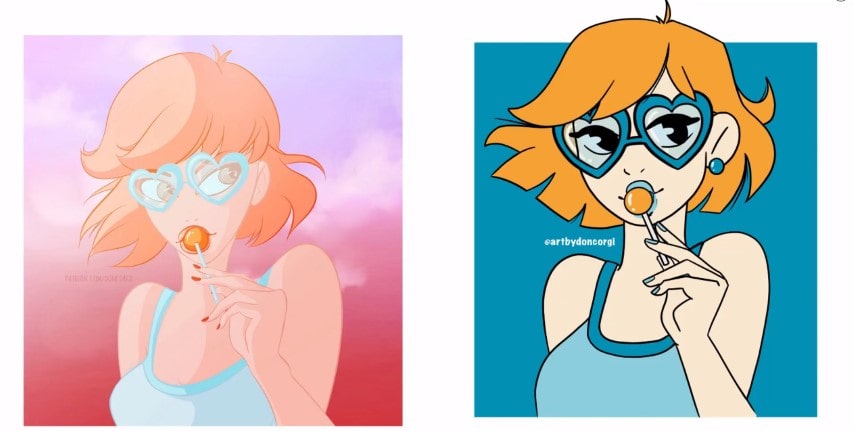
Drawing challenges are always a great and fun way to practice drawing! And the “Draw This Again” trend is a wonderful exercise for digital artists.
Many artists have taken this challenge, and it’s a great way to see how much you’ve improved your drawing skills.
To do this exercise:
- Choose an old art piece.
- Redraw it!
It’s quite simple, but effective.
You should try and recreate it as closely as possible. But if your art style has changed or if you’ve learned new techniques, feel free to incorporate those in your new drawing!
It will show your improvement over time, so it’s a great drawing exercise to do every couple of months.
Practice Drawing In A Different Art Style
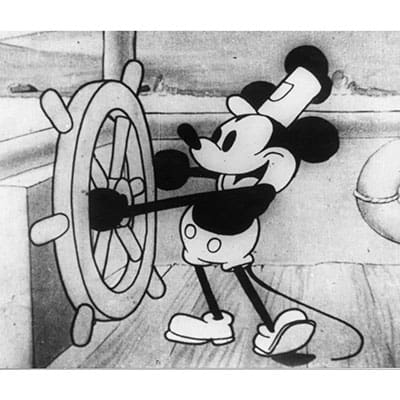
Want to try something new? How about a cartoon art style!
This is easier if you turn your digital artwork into a different style than your usual one. (Instead of just trying a new art style and drawing something new at the same time)
So choose an art style, a subject or previous work, and try your hand at it!
When you find a new art style you like, I recommend you save a painting in that style for future reference. Better yet, save a bunch of different digital paintings, so you have multiple sources of inspiration!
This is a great challenge for any digital artist, and it will help you stay inspired.
And if you’re unsure on what style to try, here are a few very simple art styles for you!
Practice With Different Brush Thickness And Settings
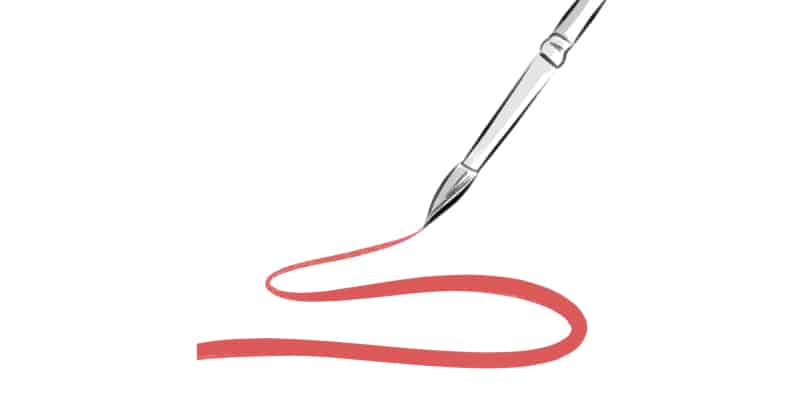
Being an artist in the digital world has its perks! And one of those perks is the number of settings you can tweak and the versatility of your digital tools.
This is one of those digital drawing exercises that seems pretty common. But most artists, when they find their favorite settings in a tool, they stop experimenting.
Take some time exploring your brush tool, play around with the line thickness of the brushes, and test out different pressure sensitivity options!
And don’t just doodle. Really go at it and draw an entire subject or artwork using different settings than usual.
This will make you more comfortable with your digital work and you might even find some new favorite settings to use!
Draw The Same Scene In Different Perspectives
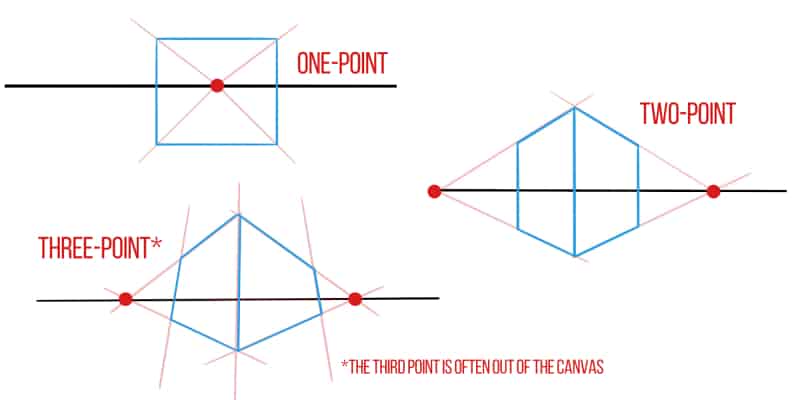
Perspective drawing can be pretty scary. But once you master it, your drawing skills will improve tenfold!
- First, get a subject or picture of real life with an interesting perspective.
- Then, make a drawing based on that picture! Keep it as close as possible to the original perspective.
- Finally, draw it again, in a different perspective!
This final step can warp your mind a bit, since you need a good imagination to draw in different perspectives. But if you know the basics of perspective, you should be able to do it!
Consider it a big challenge. This is more of those advanced digital drawing exercises.
For example, you can try a simple two-point perspective (a great way to draw architecture) with two vanishing points.
Or you can try one-point perspective if you’re looking for an easier challenge.
If you’re rusty on perspective drawing or just want a quick reminder, here’s a complete guide on the types of perspective drawing.
Practice Drawing A Difficult Animal
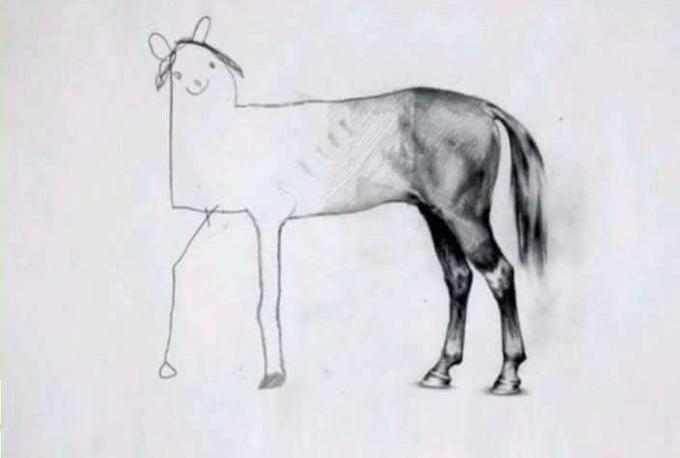
Drawing anatomy, in general, is pretty difficult! And creating a digital drawing of animal anatomy is the same.
Go outside of your comfort zone and draw a difficult animal. Be sure to use reference photos and videos to help you get the overall shapes right!
Don’t worry too much about perfection. Do several quick sketches first to capture the overall essence of the animal you’re drawing, then add details later.
Here are some difficult animals for you to draw:
- Horses
- Lions
- Elephants
- Octopuses
- Gorillas
- Eagles
- Wolves
And if you’re still looking for some more ideas other than animals, here are 7 other hard things to draw.
Draw Something Out Of Blobs
One of the most fun drawing exercises (in my opinion) that you can do is draw something out of blobs!
This will help you improve your imagination and give you a new (or several new) pieces of art.
To do this digital drawing exercise:
- Draw blobs of color on a sheet. You can do this digitally or traditionally. If you do this traditionally, take photos so you can work on them digitally after.
- Focus on the shapes and draw what comes to mind! This is pretty self-explanatory. Just draw whatever comes to mind when looking at those forms!
This is like looking at the sky and imagining the clouds look like a pig or cat!
You can also take this a step further and turn your blobs into full original characters. I did this in a video some time ago, check it out below!
If you’re not happy with your original blobs of color, just redo them in a new sheet or layer. The most important part on this exercise is to have fun and keep on experimenting.
Try Digital Sculpture And 3D Modeling
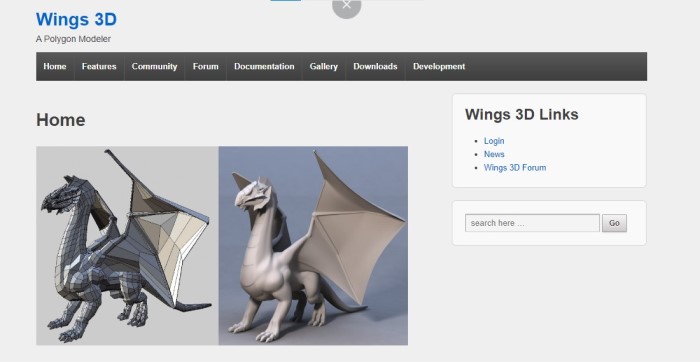
On the subject of trying new tools, there’s always a possibility to try some digital sculpturing!
Doing 3D modeling or digital sculpturing is a good way to experiment with new mediums, and it can spark some inspiration for your projects.
To practice this exercise, here’s what you can do.
- Choose a 3D Modeling/Sculpturing software. Some popular options for this are ZBrush (paid) and Blender (free).
- Pick a subject. If you’re just starting out I recommend you to pick a simple subject such as a vase or a mug.
- (Optional) Look up tutorials. These are pretty complex pieces of software, so I recommend you to look up some helpful tutorials about 3D. Youtube is always a good place to do this!
And don’t stress out about it not being perfect at first. This is a new skill so it should take some time getting used to.
If you’re looking for an extra challenge, just choose a more complex subject or a whole big environment.
You can even try sculpting a real painting, like the mona lisa, and turning it into 3D!
Master Drawing A Specific Body Part

There are many difficult body parts to draw, such as drawing hands.So if you’ve been postponing drawing the anatomy of a part of the body, now’s the time. To practice drawing the body:
- Gather reference images
- Sketch the basic shapes
- Draw the details of the body part
- Clean up the lines
- Repeat!
Fill your digital software with practice drawings of this specific body part, and you’ll improve MUCH faster. Trust me on this.
Do A Drawing Exercise With A Time Constraint

Time constraints (just like other constraints) tend to make you hyper-focus on what you’re doing, and make you get creative with your work.
So doing a drawing exercise (such as the ones we mentioned before) with a time constraint will help you improve your drawing skills much faster.
With that said, some people don’t react well being “on the clock”. So if this drawing exercise is stressful for you, feel free to skip it.
If not, then I recommend you to do some gesture drawing! These are quick gesture sketches that will improve your dynamic posing of figures.
You can use a website such as line-of-action.com and choose a time interval setting from 30 seconds to 2 minutes. According to your preference!
I recommend you start with a longer time interval and then push yourself for the shorter intervals. Have fun!
Expand Your Color Palette
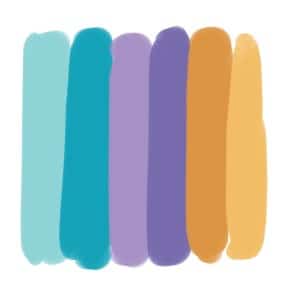
This is the opposite of another digital drawing exercise we mentioned before, where you limit your color palette. Here you make it a challenge to increase your color range and add more elements to your artwork.
For example, you’ve done a grassland painting. But you want to add some red to it. So what can you add? To increase your color palette, you could add:
- A Red Bird, such as the Northern Cardinal
- Some Red Flowers, like roses
- Lava!
The options go on and on, but this is a great exercise and challenge to practice painting with a bigger color palette.
Draw Dynamic Poses For A Character
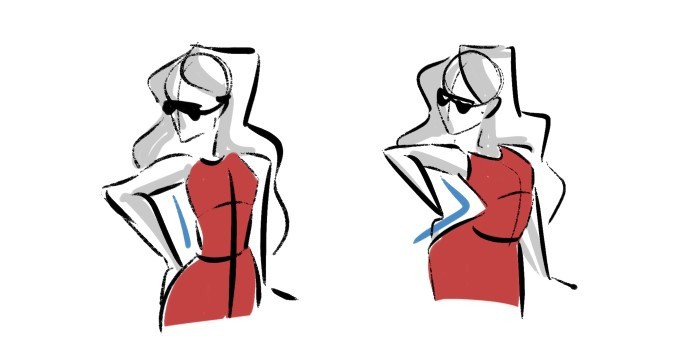
When digital drawing characters and figures, you might feel that your drawings look too stiff.
The usual problem here is that the poses aren’t dynamic enough.
This can be because of many things. From lack of confidence in your skills, a reference photo that isn’t very good or anything else.
I recommend you to really try to understand the reason your pose looks “boring” and what you can do about it! Try exaggerating the pose or start again with a stronger gesture and line of action!
This is something that you can easily get better at with some practice, and I’ve created specific videos on my Figure Drawing Course to help with this step-by-step.
Digitally Paint A Complex Environment Or Landscape
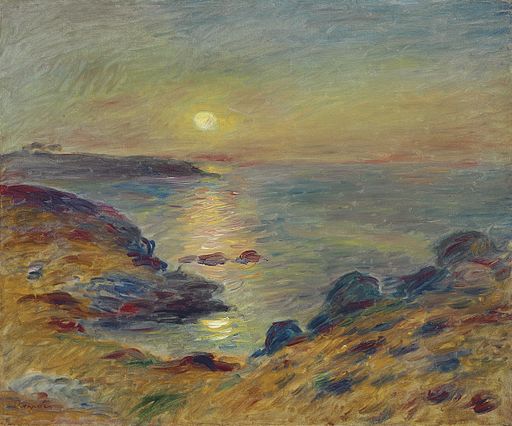
If you’re too used to drawing the same subjects (such as characters or objects) over and over again, it can become quite boring.
You can even find yourself losing motivation and inspiration! So why not try a different subject, such as doing a digital drawing of a complex environment?
When creating a digital painting of a Landscape or other environment, you should pay close attention to ALL the elements you want to include.
Whether you’re doing this digital painting with a reference photo or solely using your imagination, the distance and proportion between elements matter a lot.
Learning to draw an environment on a digital canvas deserves a whole blog post dedicated to it.
But for now, here’s what you can do:
- Choose GOOD reference images of an environment. Save several references with different elements and points of view. This will help you take elements you like from each reference image.
- Sketch the composition and perspective. Focus just on where the main elements are and add them to your composition.
- Add details and shading. Once you’re done with the sketch, take time to add details, do some shading on your canvas and figure out the light source.
- Refine, refine, refine. Now it’s time to refine! Clean your lines, see if you need to erase some elements or create new ones. Keep going until you’re happy with your digital painting!
The most important thing is to have fun with this process. Digital painting is hard and, just like in real life “traditional painting”, it takes time to get better at.
Don’t worry if it isn’t perfect yet, and concentrate on improving your painting techniques.
Related Questions
With all these digital art exercises ready for you, let’s review some quick related questions that you might find helpful.
What Are The Benefits Of Using Digital Tools In Art?

With so many benefits to drawing digitally, you can even argue that digital art is easier than traditional painting. Some of the benefits of using digital tools in art are:
- Better Portability. You can create art at any time, in any place! Simply carry your tablet (or even phone!) with you, and you’re ready to start drawing.
- More Sustainable Than Traditional Tools. Not only can you generally use the same digital tool for longer (I have used the same drawing tablet for over 10 years!), but they also have a smaller ecological footprint.
- Easy To Share And Collaborate. Want to share your artwork on different platforms? It’s easy! Save your file in a size appropriate for the platform you’re uploading, and it’s done. Want to get your traditional painting in a larger size and frame? Well… that’s a bit harder. You can also send you file to a partner to edit across the world to collaborate. Super handy!
- Thousands of Tools At Your Fingertips. Using digital tools is very versatile, since you can simply change from one tool to another with a click of a button. Want to go from a digital oil brush to charcoal? One click and you’re done! No need to wait for paint to dry or prepare surfaces.
There are many other benefits to using digital art tools, but I just wanted to cover a few here!
How Can I Stay Motivated With Consistent Drawing Practice?
Consistency is key when drawing, so if you lack motivation, you won’t be able to keep on doing these digital art exercises to improve. Worse yet, you might even burn out!
I recommend you to take consistent breaks and make a schedule, so you can make drawing a habit. I’ve gone over getting the motivation to draw in more detail in this article here.
What Digital Tools Or Software Should I Use?
I recommend you to use drawing software that you like and are used to. Some good options are Clip Studio Paint, Krita, Adobe Photoshop, and GIMP.
For more specific recommendations, check out my list of the Best Free Drawing Software here.
Can I Do These Digital Art Exercises On My Phone?
While I do recommend using a drawing tablet or a regular tablet (like an iPad with Procreate and an Apple Pencil), you can also use your phone to improve your digital art.
This will take some time to get used to, but it’s possible! Sit in a comfortable area and just use your finger or a stylus for touch screens like this one and start painting!
I hope these exercises to improve your artistic skills are helpful to you! And if you’re looking for a more guided approach to drawing, grab my Complete Figure Drawing Course, filled with helpful step-by-step video lessons!
Patricia Caldeira is the main writer here at Don Corgi. She's an art teacher with over 20.000 happy students across many platforms and courses!
Enjoy your stay and as always:
Keep on drawing!



